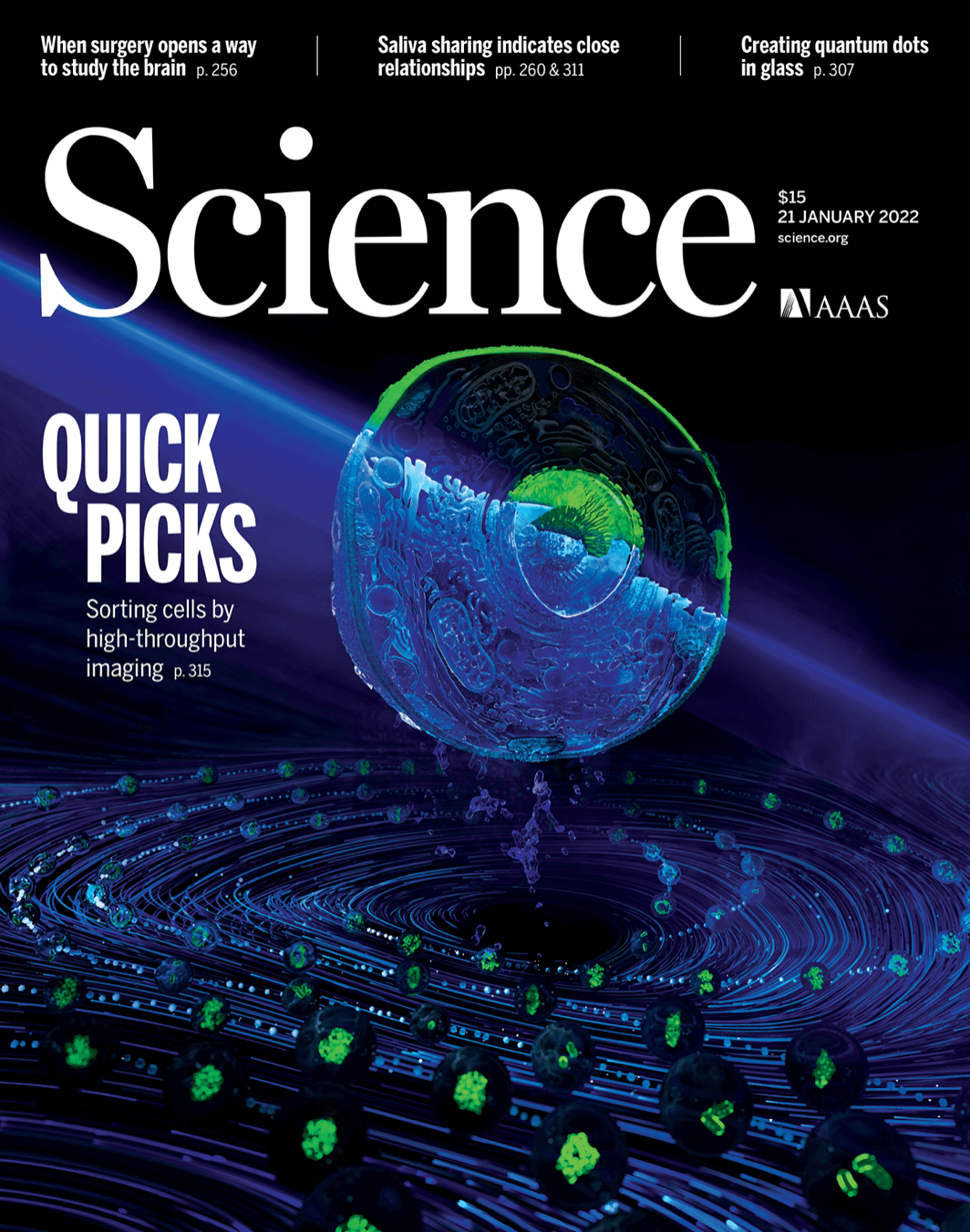3 February 2022
High-speed fluorescence image–enabled cell sorting
Sorting cells by intracellular features
Fluorescence-activated cell sorting, reported in Science 52 years ago, has revolutionized biomedical research, giving us the ability to isolate cells according to the expression of labeled proteins. So far, however, flow cytometric cell sorting has been blind to spatial processes such as intracellular protein localization, which is traditionally measured using microscopy. Schraivogel et al. combined ultrafast microscopy and image analysis with a flow cytometric cell sorter to unlock spatial phenotypes for high-throughput sorting applications. The authors show how this technology can be used to rapidly isolate cells with complex cellular phenotypes and how it can accelerate genome-wide microscopy-based CRISPR screening.

Abstract
Fast and selective isolation of single cells with unique spatial and morphological traits remains a technical challenge. Here, we address this by establishing high-speed image-enabled cell sorting (ICS), which records multicolor fluorescence images and sorts cells based on measurements from image data at speeds up to 15,000 events per second. We show that ICS quantifies cell morphology and localization of labeled proteins and increases the resolution of cell cycle analyses by separating mitotic stages. We combine ICS with CRISPR-pooled screens to identify regulators of the nuclear factor κB (NF-κB) pathway, enabling the completion of genome-wide image-based screens in about 9 hours of run time. By assessing complex cellular phenotypes, ICS substantially expands the phenotypic space accessible to cell-sorting applications and pooled genetic screening.
Schraivogel, D., Kuhn, T.M., Rauscher, B., Rodríguez-Martínez, M., Paulsen, M., Owsley, K., Middlebrook, A., Tischer, C., Ramasz, B., Ordoñez-Rueda, D., Dees, M., Cuylen-Haering, S., Diebold, E., Steinmetz, L.M. (2022). High-speed fluorescence image-enabled cell sorting. Science, 375(6578), 315-320. doi: 10.1126/science.abj3013.
